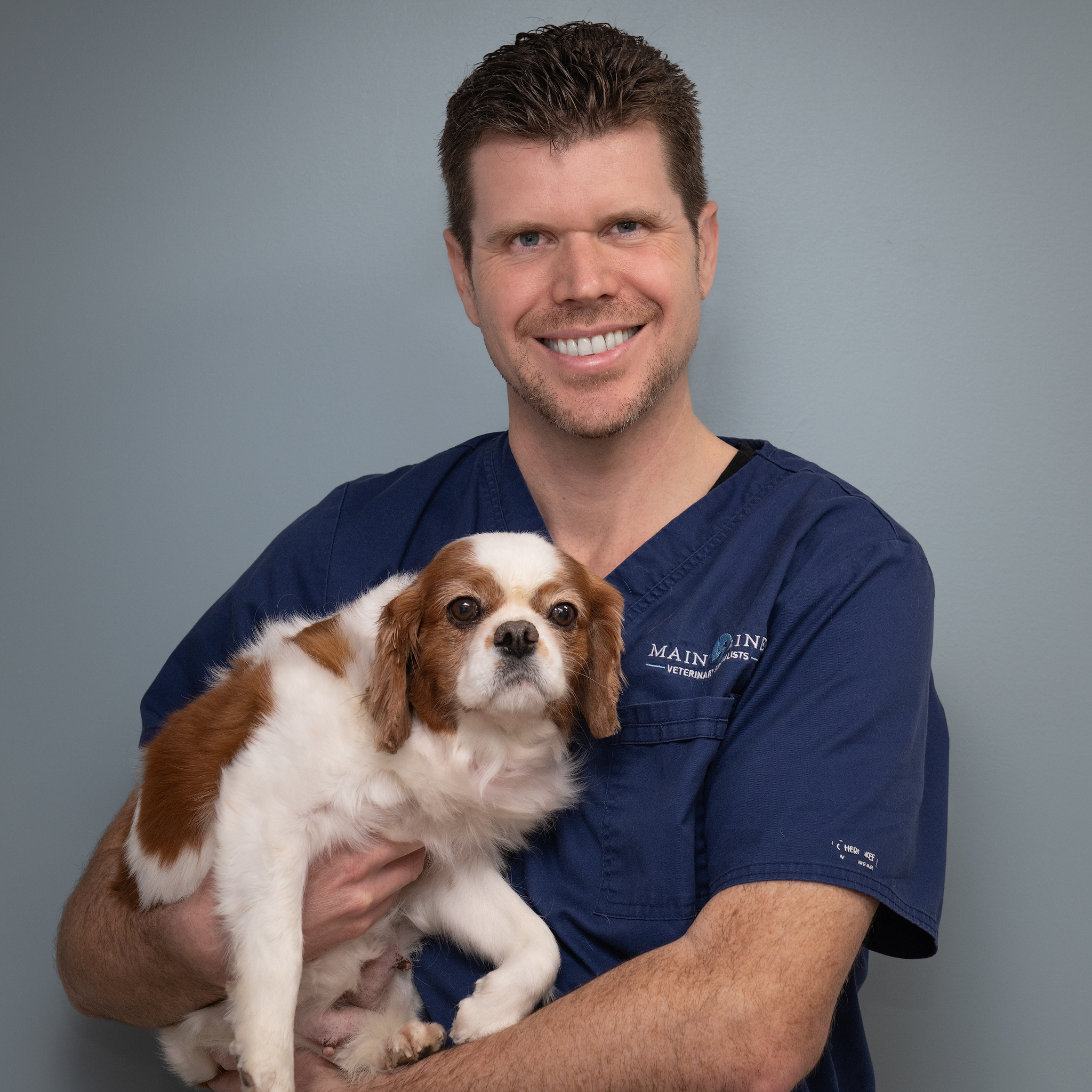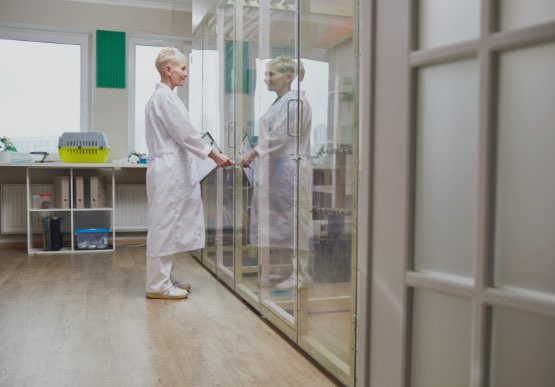The Duty of Ultrasound and CT Scan in Modern Vet Practices: Insights From Experienced Professionals
In modern vet practices, ultrasound and CT scans considerably boost diagnostic capacities. These imaging strategies offer vital understandings into animal health and wellness, leading therapy choices. Experienced experts identify the special advantages of each modality. Ultrasound offers real-time assessments, while CT scans provide complex physiological details. Understanding their applications and roles elevates essential inquiries about their influence on individual results and the future of vet diagnostics. What understandings can be obtained from their integrated usage?
Understanding Ultrasound in Vet Medicine
Ultrasound is an important analysis device in veterinary medicine, using a non-invasive method to envision internal structures. This imaging technique employs high-frequency acoustic waves to create real-time photos of cells and body organs, allowing veterinarians to evaluate problems without surgical treatment. Usual applications include reviewing the heart, liver, kidneys, and reproductive organs, along with monitoring pregnancies.The treatment is fairly fast and can be done in different setups, making it an accessible alternative for veterinarians. Unlike radiography, ultrasound supplies thorough information about soft cells and blood circulation, which is crucial for accurate diagnoses.Veterinary specialists depend on ultrasound to discover irregularities such as growths, cysts, and liquid buildup. Its capability to lead biopsies and other treatments further improves its utility in clinical practice. By providing a effective and safe way to examine internal makeup, ultrasound has ended up being a keystone of modern veterinary diagnostics.
The Benefits of CT Scans for Pet Diagnostics
CT checks offer substantial benefits in vet diagnostics by giving improved accuracy in determining inner conditions (CT Scans For Animals). As a non-invasive imaging method, they ensure the security and convenience of animals throughout examinations. Additionally, CT scans promote a complete evaluation of internal structures, permitting much more effective therapy preparation
Boosted Diagnostic Accuracy
Improvements in imaging modern technology have greatly enhanced diagnostic precision in vet medicine, especially via the use of CT scans. These scans offer in-depth cross-sectional pictures of a pet's internal frameworks, allowing veterinarians to recognize abnormalities with accuracy. The high resolution and three-dimensional capacities of CT imaging facilitate the discovery of conditions such as growths, cracks, and interior blood loss that could be missed out on with standard imaging approaches. Furthermore, CT scans can assist in pre-surgical planning by offering a thorough view of anatomical partnerships. This level of information not only boosts the accuracy of medical diagnoses yet additionally aids in tailoring effective treatment plans. The assimilation of CT innovation into veterinary methods is changing the landscape of pet medical care, improving outcomes for clients.
Non-Invasive Imaging Strategy
The intro of non-invasive imaging methods has reinvented pet diagnostics, with CT scans arising as a prominent device in vet methods. These scans offer high-resolution, cross-sectional photos of an animal's interior structures, allowing veterinarians to assess intricate problems without the demand for intrusive treatments. The advantages of CT scans include their ability to discover lumps, fractures, and inner bleeding with remarkable precision. Furthermore, they facilitate the examination of soft cells and organs, improving diagnostic capabilities. The speed of CT scanning enables quick decision-making, which is essential in emergency circumstances. By lessening anxiety and pain for the animal, CT scans add to a much more humane strategy to diagnostics, inevitably boosting treatment end results and progressing vet treatment.
Comprehensive Internal Analysis
A detailed interior assessment is important for precise diagnosis and efficient therapy in veterinary medicine. CT checks deal considerable advantages in this respect, offering in-depth cross-sectional pictures of a pet's interior frameworks. This sophisticated imaging method enhances visualization of complicated anatomical areas, enabling vets to identify abnormalities such as growths, fractures, and interior bleeding with greater precision. On top of that, CT checks facilitate the analysis of problems that might be challenging to identify through standard approaches. The rate and precision of CT imaging additionally contribute to prompt interventions, enhancing client end results. As vet practices progressively include CT innovation, the benefits of comprehensive internal assessments end up being apparent, enhancing the relevance of this device in modern-day veterinary diagnostics.
Comparing Ultrasound and CT Imaging Techniques
While both ultrasound and CT imaging offer crucial functions in veterinary diagnostics, each strategy supplies distinctive advantages and restrictions that can affect medical decision-making. Ultrasound is specifically valued for its real-time imaging capacities, permitting veterinarians to observe dynamic physiological processes. This technique is non-invasive, portable, and does not entail ionizing radiation, making it a more secure choice for both pets and medical professionals. However, ultrasound may have constraints in picturing particular anatomical frameworks or deep tissues.Conversely, CT imaging gives detailed cross-sectional views of the body, enabling for specific localization of irregularities. It excels in examining facility body organs and frameworks, especially in the thorax and abdominal area. CT scans need sedation or anesthesia in several cases and entail direct exposure to ionizing radiation. Inevitably, the option between ultrasound and CT depends upon the specific professional scenario, the area of passion, and the necessity of the diagnostic needs.
Situation Studies: Effective Medical Diagnoses Via Imaging
Study highlight the significant renovations in analysis accuracy attained via innovative imaging innovations like ultrasound and CT scans in vet methods. These advancements not just improve the discovery of numerous problems yet also help with timely and efficient treatment plans. Analyzing particular cases can highlight the transformative effect of these imaging techniques on vet medication.
Diagnostic Accuracy Improvements

Imaging Innovation Advancements
As vet imaging innovation remains to develop, its influence on diagnostic capabilities comes to be progressively obvious. Recent situation research studies highlight the effective application of sophisticated ultrasound and CT check techniques in recognizing intricate conditions. A veterinary facility utilized high-resolution CT scans to diagnose a rare kind of lung cancer in a canine, which traditional imaging had missed. An ultrasound assessment exposed a stomach mass in a cat, triggering timely surgical treatment and a positive outcome. These improvements not only improve diagnostic accuracy however additionally allow veterinarians to devise targeted treatment plans. By leveraging innovative imaging modern technologies, veterinary specialists are substantially enhancing client treatment, bring about more reliable administration of different wellness problems in animals.
The Duty of Imaging in Emergency Vet Treatment
Imaging plays a necessary function in emergency vet care, providing vets with vital info required to make rapid, educated decisions. In immediate situations, methods like ultrasound and CT scans allow practitioners to rapidly assess a pet's inner frameworks, recognizing critical problems such as inner blood loss, fractures, or organ problems. These imaging methods enable real-time evaluations, helping with timely treatments that can be life-saving. Ultrasound is very useful for reviewing soft tissue injuries and conditions like liquid build-up, while CT scans deal detailed images of complicated anatomical structures, essential for diagnosing injury instances. check The speed and precision of these imaging strategies enhance the vet's capability to design efficient therapy strategies, guaranteeing the most effective possible results for their clients. As a result, the assimilation of innovative imaging innovations right into emergency veterinary practices is not only beneficial yet increasingly necessary, as it improves analysis capacities and boosts overall pet care during defining moments.
Training and Know-how in Veterinary Imaging
Although sophisticated imaging strategies such as ultrasound and CT scans are necessary for reliable vet care, the successful execution of these modern technologies greatly relies on the training and proficiency of veterinary specialists. Skilled use imaging devices calls for detailed understanding of makeup, pathology, and the principles underlying each technique. Veterinary experts must undergo specific training to properly analyze imaging outcomes, which is vital for diagnosing problems and preparing treatment.Certifications and continuing education and learning in veterinary imaging enhance the abilities of specialists, enabling them to remain updated with technical advancements. Partnership in between vets and radiologists frequently brings about improved diagnostic accuracy, as professionals can supply insights into complicated cases. On top of that, sensible experience in managing imaging devices promotes self-confidence in its application. Eventually, the high quality of veterinary imaging services is straight correlated to the degree of training and competence had by the specialists utilizing these vital diagnostic devices.
Future Trends in Diagnostic Imaging for Animals
With the quick developments in technology, veterinary diagnostic imaging is poised for significant advancement in the coming years. Arising patterns indicate a shift in the direction of more available and mobile imaging methods, such as handheld ultrasound devices, which could boost field diagnostics. Additionally, the assimilation of man-made intelligence is expected to transform picture analysis, enabling quicker and much more accurate analyses of results.Moreover, improvements in 3D imaging techniques and calculated tomography will certainly give veterinarians with even more thorough views of animal composition, bring about enhanced treatment plans. Virtual reality innovation might likewise contribute in medical preparation and education, offering vets an unique point of view on complicated cases.As telemedicine proceeds to grow, remote assessments assisted in by analysis imaging will become much more usual, enabling professionals to aid general specialists in real-time. Overall, these trends are readied to enhance the effectiveness and efficiency of veterinary care, eventually improving animal end results.
Regularly Asked Questions
How Much Do Ultrasound and CT Checks Price in Vet Centers?
The costs of ultrasound and CT scans in vet facilities usually vary from $300 to $1,500, depending upon variables such as area, facility kind, and details treatments required for the animal's medical diagnosis and treatment.

Exist Any Kind Of Dangers Connected With Ultrasound and CT Checks for Pets?
Ultrasound and CT scans usually position very little dangers to family pets. Possible worries consist of sedation reactions and exposure to anesthetics. Vets meticulously assess each situation to mitigate any type of threats connected with these analysis treatments
How Much Time Do Ultrasound and CT Treatments Normally Take?
Ultrasound treatments usually take around 30 mins to an hour, depending upon the intricacy. CT scans, being even more detailed, usually require thirty minutes to 90 mins, including prep work and healing time for the animal.
Can All Veterinarians Perform Ultrasounds and CT Scans?
Not all vets can do ultrasounds and CT scans. Specialized training and qualification are typically called for to assure expertise in these innovative imaging techniques, which might limit their schedule to vets with extra qualifications and sources.
What Sorts Of Animals Benefit A Lot Of From These Imaging Techniques?
Particular pet types, particularly pets and cats, advantage substantially from ultrasound and CT scans. These imaging methods enhance diagnostic accuracy for conditions like tumors, inner injuries, and body organ irregularities, resulting in enhanced therapy results and patient CT Scans For Animals treatment. The high resolution and three-dimensional capacities of CT imaging facilitate the discovery of conditions such as tumors, cracks, and inner blood loss that could be missed with standard imaging approaches. Instance studies illustrate the substantial enhancements in analysis accuracy accomplished through sophisticated imaging innovations like ultrasound and CT scans in veterinary techniques. Improving diagnostic precision in veterinary methods has actually been significantly helped by advancements in imaging innovations such as ultrasound and CT scans. Advanced imaging strategies such as ultrasound and CT scans are necessary for reliable vet care, the effective implementation of these technologies heavily depends on the training and expertise of vet experts. Vet experts must undertake customized training to properly analyze imaging outcomes, which is important for identifying conditions and intending treatment.Certifications and continuing education in veterinary imaging boost the abilities of professionals, allowing them to stay upgraded with technical advancements.